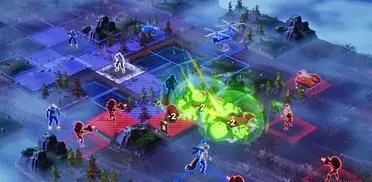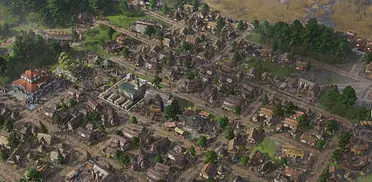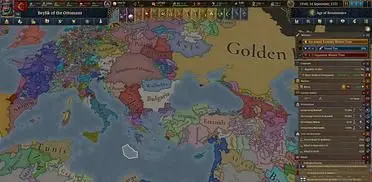 |
 |
|
| Scrolling down on the middle mouse shows the scale of the universe. |
Renaming systems is easy. No more planet Cher. |
The year is 4620 and the once-dominant Eonian Immortals are a race in tatters. Following the destruction of their civilisation in a war against a rival faction, two Immortal survivors, Enais and Bythos, began to rebuild with the aid of six mortal races. However, self-interest and a hunger for power divided the two gods, resulting in a war. Now that the mortal races are once more ready to expand into the universe, they must decide whether to align themselves with the Immortals, ignore them or defeat them.
The player must choose one of the six mortal races (the seventh race from Lost Empire, the Chi Lung, has been dropped) and begin to develop their civilisation. Immortals follows the 4X formula (explore, expand, exploit and exterminate), providing the player with a scout ship, a colony ship and a home system to begin with. Initially, exploration and expansion are the priority but the smart gamer will keep an eye on their resources from the very beginning. Food, minerals and money are necessary for health, construction and science respectively and must be balanced accordingly. Expanding civilisations need more and more resources so new systems need to be chosen carefully in order to keep the empire ticking over.
It's easy to settle into a routine or formula in the early stages of Immortals, but this will soon be shattered by first contact. As the player encounters other races, they will be forced into redressing the expansion/resource balance. The pace of the game picks up considerably, largely due to the unpredictability of the opposition AI. While some players may be lucky enough to have peaceful first contact, others will have their resolve tested early on. Opposing races will send attacking ships into your systems in order to gauge military strength. If they decide your race is weak, they may start issuing unreasonable demands for resources. At this point the player must decide whether to start thinking about defence (if they haven't already) or give into the demands. As the game progresses, and more races are introduced to the mix, Immortals evolves into a mind-boggling balancing act that will satisfy even the most hardcore strategy fan.
 |
 |
|
| The 3D Battle Viewer is more interesting in motion. Honestly. |
“We've only got one option left. Launch the Green Bums!” |
However, while the AI injects pace and tension into the game, it also adds a few annoyances. At times, it stops being unpredictable and just becomes frustratingly inconsistent. In one turn you'll be forging alliances with a race and being offered gifts, only for them to invade one of your systems in the next. This is especially baffling when the race is listed as 'friendly', and often occurs before you've made any diplomatic links at all. It all seems a little randomly-generated, and works against the depth on offer elsewhere in the game.
Should the player wish to confront the AI, they'll be faced with the slightly disappointing battle system. Considering the mountain of information and options in Immortals, it's surprising that the battles are so light on tactics. Skirmishes are largely non-interactive and the player simply assigns one of nine battle roles to each ship in the fleet. The conflict can then be watched back in a 3D battle viewer in order to gain tactical insight. The problem is that it's not always obvious why your tactics failed, and it seems to be the stats of the warring ships that determine the outcome. The battle result screen is actually more informative as it tells you what kind of weapons your opponent was using. With this knowledge in hand, the player can upgrade their ships with better defences. Luckily, the upgrade and ship design features are a godsend. Immortals allows existing ships to carry new technology without having to build a whole new fleet. It saves the player a huge amount of time and resources.
And yet, while Immortals is extremely user-friendly in some areas, it's simply a pain in others. The 2D universe plane, on which you'll spend most of your time, is one such area. Although it makes the impressively huge star map easier to navigate, it also means that there will often be a lot of icons in one place, especially later in the game. In practice this means you'll spend a lot of time clicking furiously on an icon which simply won't respond because the game thinks you're selecting the one next to it. In most cases there will be a another way to select the icon you want, but it feels a little clunky. Also, the odd technical problem may arise with corrupt saved games causing Immortals to crash at startup. It's easily fixed (delete save game in question) but perhaps should have been addressed in the recently-released patch.
 |
 |
|
| The overview buttons at the bottom of the screen are indispensable. |
HealthCare invented: Americans unconvinced. |
LOST EMPIRE: IMMORTALS VERDICT
The strength of Lost Empire: Immortals lies in the developer’s understanding of its audience. Pollux have ensured that there is enough size and depth in Immortals to ensnare the PC 4X fan. It’s the kind of game that requires hour upon hour of input in order to get the most out of it. As the game progresses, it becomes more tense, complex and demanding and a large scale space civilisation is a sight to behold (never mind micromanage). While the multiplayer goes some way to atoning for the AI (and adding to the already impressive longevity), Immortals still lacks something. It feels a little dated in some places, utterly absorbing in others and frustrating in the rest. For a game so concerned with balance, its annoyances are in danger of outweighing its virtues.
TOP GAME MOMENT
A multi-fleet battle for my capital system.




